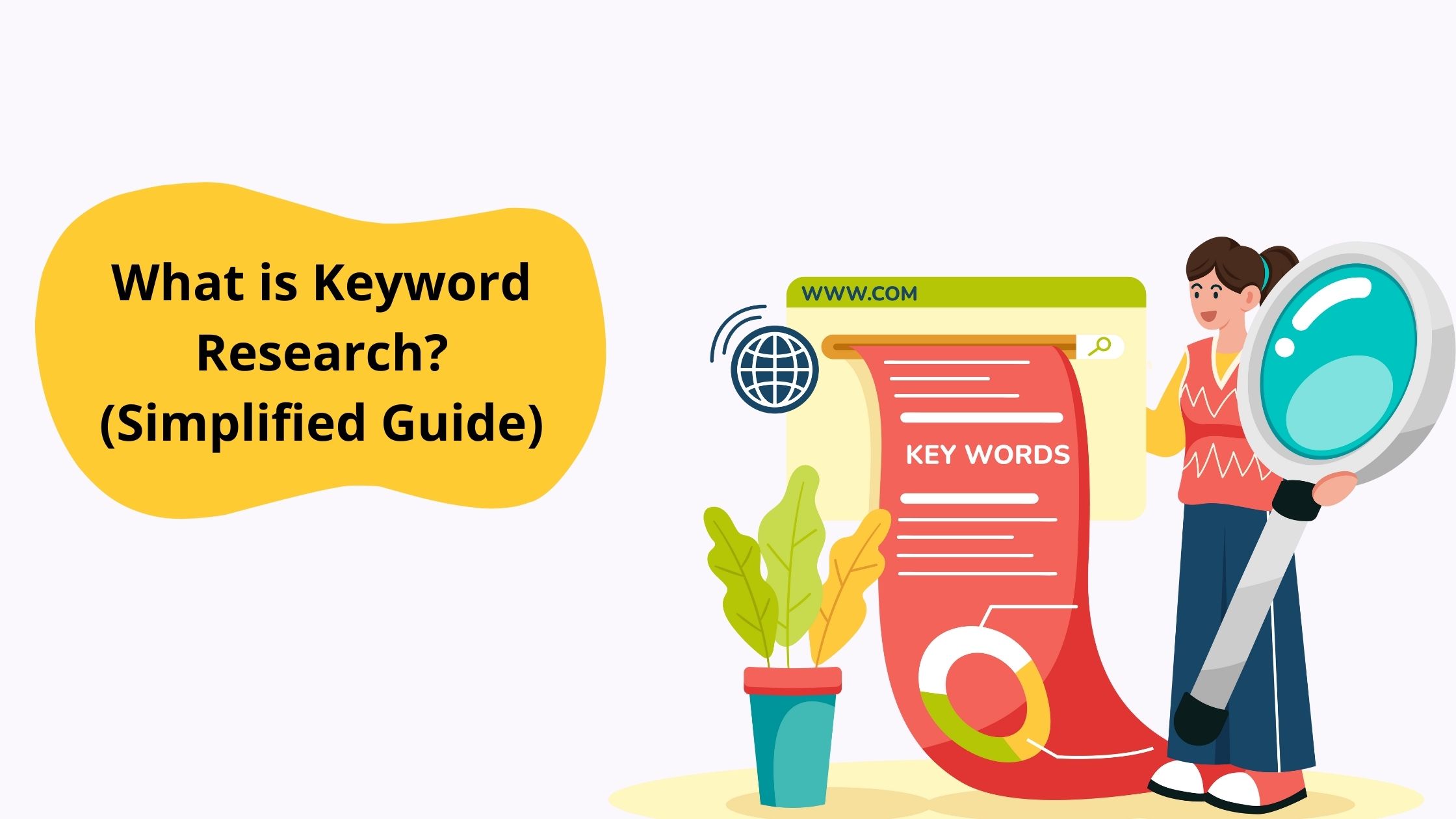Have you ever felt overwhelmed by SEO jargon, ranking algorithms, and endless Google updates? You’re not by yourself. When broken down step-by-step, SEO fundamentals are simple, despite the fact that many business owners and new marketers believe it to be complicated.
This SEO for Beginners guide will help you learn how to properly optimize your website to draw in organic traffic and establish a strong online presence.


What is SEO?
Search Engine Optimization, or SEO, improves your website to increase its visibility on search engines like Google, bing. SEO ensures that your website shows up at the top of search results when someone searches for a service or answer related to your business.
In simple terms, SEO involves:
- Knowing what your audience is looking for
- Creating valuable content around those topics
- Optimising your website’s structure, speed, and user experience
- Building credibility through backlinks and consistent quality
The ultimate goal of SEO is to drive organic (unpaid) traffic to your website by making it easy for users and search engines to find, understand, and trust your content.
Why Does Your Website Need SEO?
Here are some reasons why SEO is essential for all businesses:
- Generating free organic traffic without constant advertising
- Increases your audience’s credibility and trust.
- It improves user experience by making the site faster and more organized.
- Offers ROI and long-term growth in contrast to paid advertisements.
- Establishes you as an expert in your field.
If you aim to scale strategically, professional SEO Services can help you implement techniques that outperform your competitors.
SEO Basics For Beginners: A Step By Step Guide To Get Started


Starting SEO as a beginner might feel overwhelming, but breaking it into clear, actionable steps becomes manageable. Here’s how you can begin your SEO journey effectively:
1. Understand How Search Engines Operate
Before implementing SEO tactics, learn how Google and other search engines function:
- Crawling: Your website’s pages are located by search engines using bots.
- Indexing: These pages are then saved in the search engine’s database
- Ranking: Pages are shown in search results according to user experience, authority, and relevancy.
2. Conduct Keyword Research
The foundation of SEO is keyword research
- Use tools like Google Keyword Planner, Ubersuggest, or Ahrefs to find the terms your target audience searches for.
- Pay attention to keywords with high search volume, little to no competition, and clear search intent.
- For instance, if you work in digital marketing, keywords such as “SEO basics for beginners” or “how to do keyword research step by step” can help you choose the topics of your content.
Learn how to do keyword research in SEO for a practical walkthrough.
3. Create High-Quality Content
Your keywords come to life in content, giving users something valuable.
- Understand Search Intent: Ensure your content directly answers user queries
- Write Engaging Content: Make it informative, well-structured, and easy to read
- Optimise Above-The-Fold Content: Communicate your page’s purpose in the first visible section
4. Optimise On-Page SEO Elements
Improve your page’s visibility by optimizing:
- Title Tags: Include target keywords naturally
- Meta Descriptions: Write compelling summaries that encourage clicks
- Headings: Use H1 for the title and H2/H3 for subsections to structure content
- URLs: Keep them short, descriptive, and keyword-rich
- Images: Add descriptive file names and alt text for accessibility
- Internal Links: Link to other relevant pages to enhance crawlability and user experience
Explore On-page SEO services to implement advanced optimization strategies on your website.
5. Improve Technical SEO
Make your website easy for search engines to crawl and users to navigate.
- Website Structure: Use straightforward navigation and logical page hierarchy
- Page Speed: Optimise loading times for better user experience and rankings
- Mobile-Friendliness: Ensure your website is responsive on all devices
- Secure with HTTPS: Build trust with a secure website connection
6. Build Backlinks (Off-Page SEO)
Backlinks from reputable websites enhance your authority in search engine eyes.
- Partner with Industry Websites: Request links from suppliers or partners
- Submit to Directories: List your site on credible industry directories
- Earn Media Mentions: Share insights with journalists for features
- Create Share-Worthy Content: Develop guides or tools that naturally attract links
7. Track Your Progress
Use tools like Google Analytics and Search Console to:
- Monitor organic traffic and keyword rankings
- Identify pages that perform well or need improvement
- Analyse user behavior and engagement metrics
8. Keep Learning and Adapting
SEO is dynamic, with search engine algorithms evolving regularly. Stay updated by:
- Reading trusted blogs like Moz, Search Engine Journal
- Experimenting with new strategies and analyzing results
- Joining SEO communities for insights and discussions
How Can You Ensure Your Website Can Be Indexed by Google?
Your website needs to be indexable to show up in Google search results. Make sure:
- Your sitemap is uploaded to Google Search Console
- Noindex tags are used sparingly, preventing important pages from being blocked
- Robots.txt is set up without preventing important pages
- Internal links link all important pages to enhance crawlability
- Duplicate content is kept to a minimum to prevent indexation problems
- Search Console reports are used to quickly fix crawl errors.
Measuring SEO Success
After you’ve put your SEO strategies into practice, it’s critical to monitor their results in order to determine what is and is not working and where you should concentrate your next efforts. The following are the main indicators of SEO success
1. Organic Traffic
Organic traffic refers to visitors coming to your website through unpaid search results. It shows your website’s overall reach and visibility in search engines.
How to measure:
- Use Google Analytics to monitor organic traffic trends over time
- Compare traffic over the last 6-12 months to identify growth patterns.
- Differentiate between branded vs non-branded traffic to understand whether users are searching for your brand specifically or discovering you through informational queries.
2. Keyword Rankings
Tracking your keyword rankings shows how well your pages perform in search results. Higher rankings increase the likelihood of attracting clicks and traffic.
How to measure:
- Use tools like Ahrefs, SEMrush, or Moz to monitor keyword positions
- Identify which keywords are improving, declining, or have new opportunities for optimization.
3. Click-Through Rate (CTR)
CTR measures the percentage of users who click on your website link after seeing it in search results. A high CTR indicates your title tags and meta descriptions are compelling.
How to measure:
- Check Google Search Console to view CTR for individual pages and keywords
- Optimise titles and descriptions for keywords with impressions but low CTR
4. Conversion Rate
Ultimately, SEO is about driving business results, not just traffic. It shows whether your organic visitors are taking desired actions such as filling out forms, signing up, or making purchases.
How to measure:
- Set up goals in Google Analytics to track form submissions, sales, or downloads.
- Calculate the percentage of organic users completing these actions.
5. Engagement Metrics
These metrics reveal how users interact with your website content.
Bounce Rate
The percentage of users who leave after viewing only one page.
- Lower is better as it indicates your content meets user intent.
- Time on Page: Measures how long visitors stay on a page.
- Longer time indicates valuable and engaging content.
Pages per Session: The number of pages a user views during a single visit. - Higher pages per session show users are exploring your website further.
6. Backlinks
Backlinks remain a strong ranking factor in SEO. They signal credibility and authority to search engines.
How to measure:
- Use Ahrefs or SEMrush to monitor the number and quality of backlinks
- Focus on earning backlinks from reputable, niche-relevant websites.
7. Domain Authority (DA)
DA is a metric developed by Moz that predicts how likely your website is to rank in search results. Higher DA often correlates with better ranking potential.
How to measure:
- Use Moz’s free Domain Authority Checker or integrated SEO tools
- Monitor DA over time as your backlink profile and content quality improve.
8. Tools To Measure SEO Performance
Here are essential tools to track and analyze your SEO results:
- Google Analytics: For tracking organic traffic, user behavior, and conversions
- Google Search Console: For monitoring keyword performance, CTR, and indexation status
- Ahrefs / SEMrush / Moz: For comprehensive keyword tracking, backlink analysis, and competitor research
Conclusion
SEO for beginners may seem challenging, but it becomes an empowering journey with consistent implementation. Focus on:
- Learning continuously
- Applying best practices strategically
- Tracking results and refining approaches
Mastering these SEO basics today builds a solid foundation for long-term traffic, leads, and business growth.
FAQ
Q1. How do I start SEO for my website as a beginner?
Begin with keyword research, optimize on-page elements, improve site speed, build backlinks, and track results using analytics tools.
Q2. Can I teach myself SEO without any courses?
Yes. Learn SEO basics by reading trusted blogs, practicing on your website, analyzing competitors, and staying updated with SEO trends.
Q3. What is the 80/20 rule in SEO?
It suggests that 80% of results come from 20% of efforts, helping you prioritize impactful SEO activities efficiently.
Q4. Should I hire an SEO freelancer for my website?
Hiring an SEO Freelancer ensures advanced strategies are implemented effectively, saving time and driving better results.



